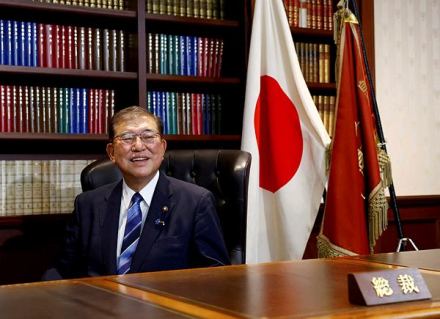Shigeru Ishiba has secured his place as Japan’s 102nd Prime Minister, a significant milestone achieved after five attempts to lead the Liberal Democratic Party (LDP). His appointment follows a highly competitive race involving nine candidates to succeed the outgoing Prime Minister Fumio Kishida, who resigned amid political scandals and growing calls for his departure. Ishiba’s leadership victory marks a pivotal moment in Japan’s politics, and his upcoming debut on the global stage will be at the G20 Summit in November, where he is expected to meet Indian Prime Minister Narendra Modi.
A Long Path to Leadership
Ishiba’s journey to becoming Prime Minister has been defined by persistence and resilience. At 67, he has made five attempts to lead the LDP, Japan’s dominant political party since 1955. In his most recent bid, Ishiba emerged victorious over economic security minister Sanae Takaichi, who was vying to become Japan’s first female Prime Minister. The race concluded with a run-off vote, where Ishiba garnered 215 votes to Takaichi’s 194, solidifying his position as Kishida’s successor. The leadership election was one of the most unpredictable in Japan’s recent history, reflecting shifting dynamics within the LDP.
Ishiba’s political career has been shaped by his willingness to challenge the party’s conventional approaches. This willingness to speak out, even when unpopular, earned him both powerful enemies within the party and a dedicated following among grassroots members. He sits on the more progressive wing of the conservative party, advocating for reforms such as reducing Japan’s dependence on nuclear energy, supporting married women’s rights to keep their maiden names, and proposing an Asian version of NATO to counter regional threats.
Challenges on the Horizon
As Japan’s new leader, Ishiba inherits a challenging political landscape. Domestically, Japan is grappling with rising living costs and high inflation, exacerbated by the depreciation of the yen. In his campaign, Ishiba vowed to address these economic concerns by ensuring real wage growth and guiding Japan towards a full economic recovery. His policy priorities also include reducing reliance on nuclear energy in favour of renewable sources, a stance that resonates with a public increasingly wary of nuclear risks.
On the international front, Ishiba steps into office amid heightened security concerns in East Asia. The growing assertiveness of China and the persistent nuclear threat posed by North Korea are key challenges that will require a delicate balancing act. His stance on regional security mirrors that of his predecessor, Fumio Kishida, who expanded Japan’s defence cooperation with key allies, particularly the United States. Ishiba has emphasized the need for strong deterrence, drawing parallels between the ongoing conflict in Ukraine and potential risks in Northeast Asia.
First Meeting with PM Modi at the G20 Summit
Ishiba’s first major international engagement will take place in November at the G20 Summit, where he is expected to meet with Indian Prime Minister Narendra Modi. The meeting comes at a critical time for both nations, as they seek to deepen their strategic partnership amid shifting geopolitical dynamics. India and Japan have long shared mutual interests in promoting stability and security in the Indo-Pacific region. Under Kishida, Japan strengthened its defence ties with India, and this trajectory is likely to continue under Ishiba’s leadership.
The G20 Summit will serve as a platform for the two leaders to discuss a range of issues on the sidelines, including economic collaboration, trade, and regional security concerns. With India also grappling with economic challenges, both leaders may explore avenues for enhanced cooperation in areas such as technology, infrastructure, and renewable energy.
